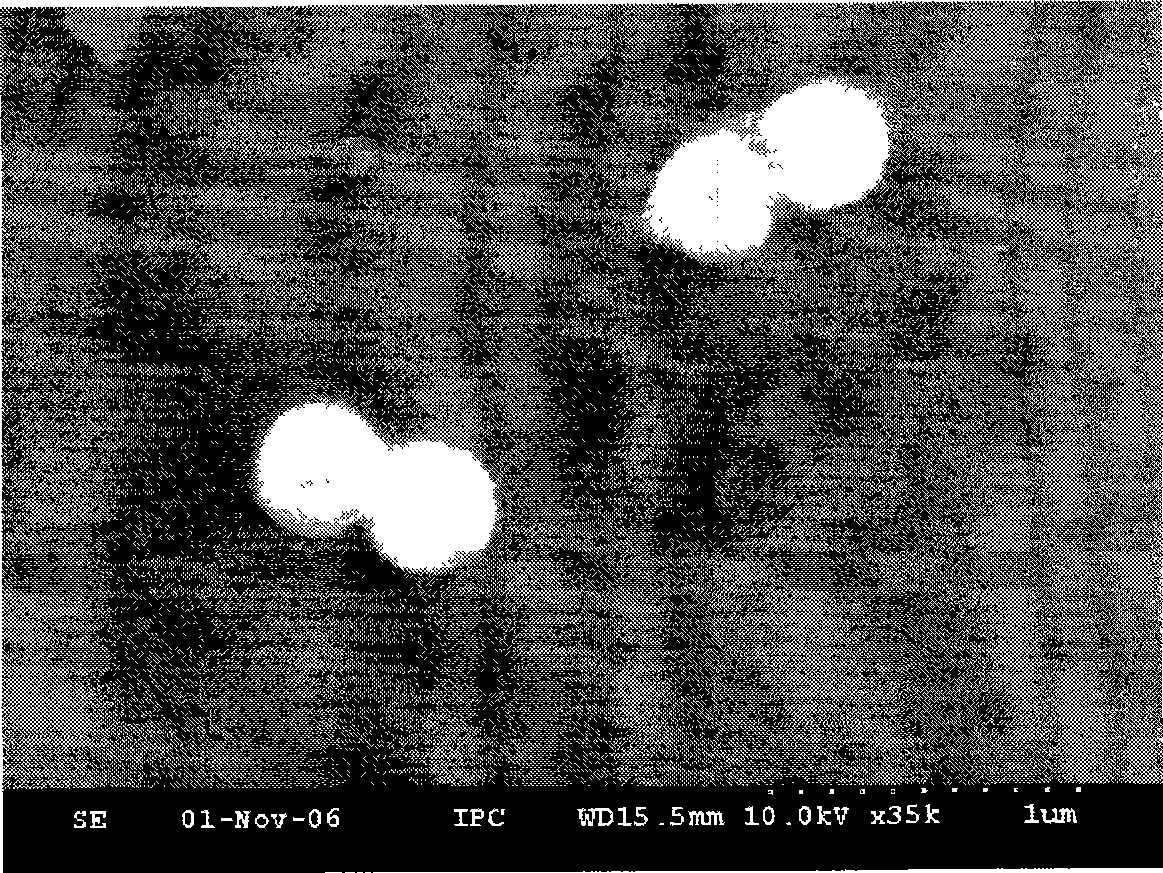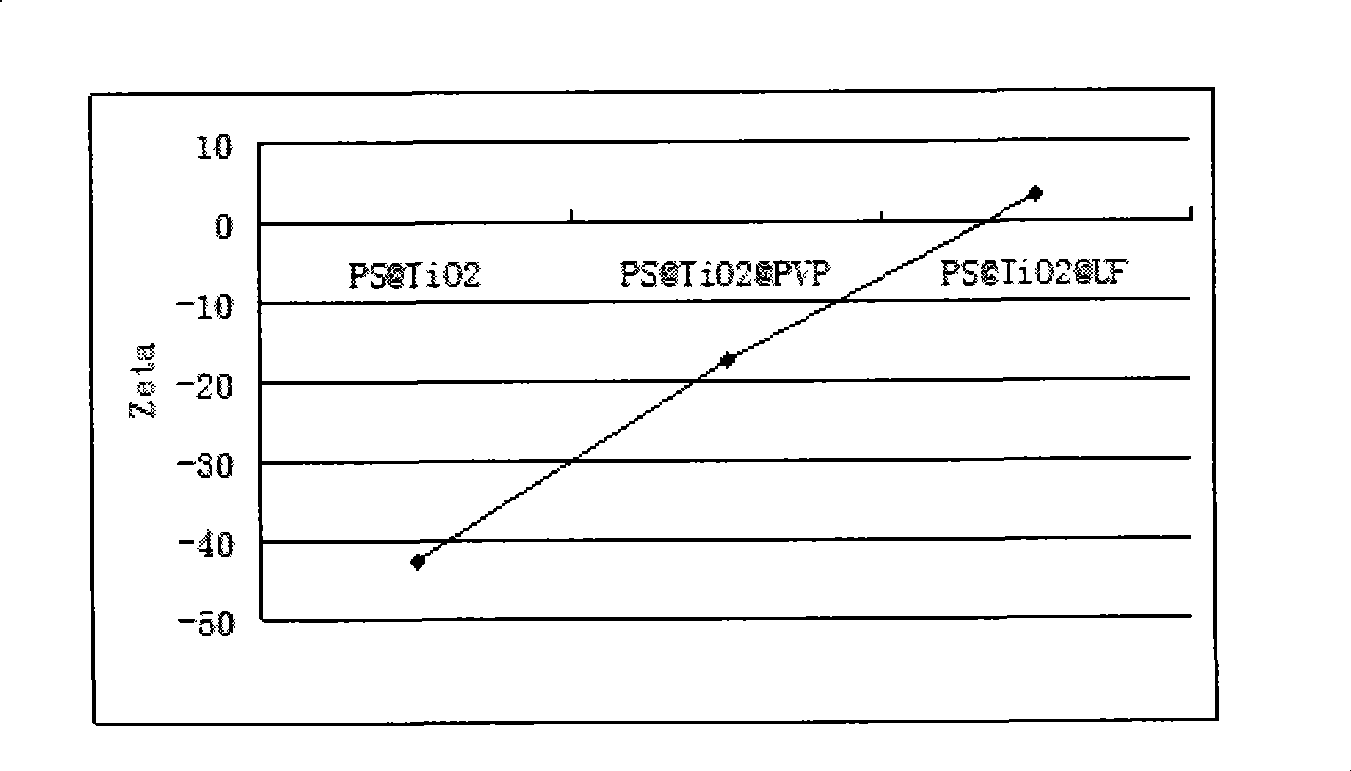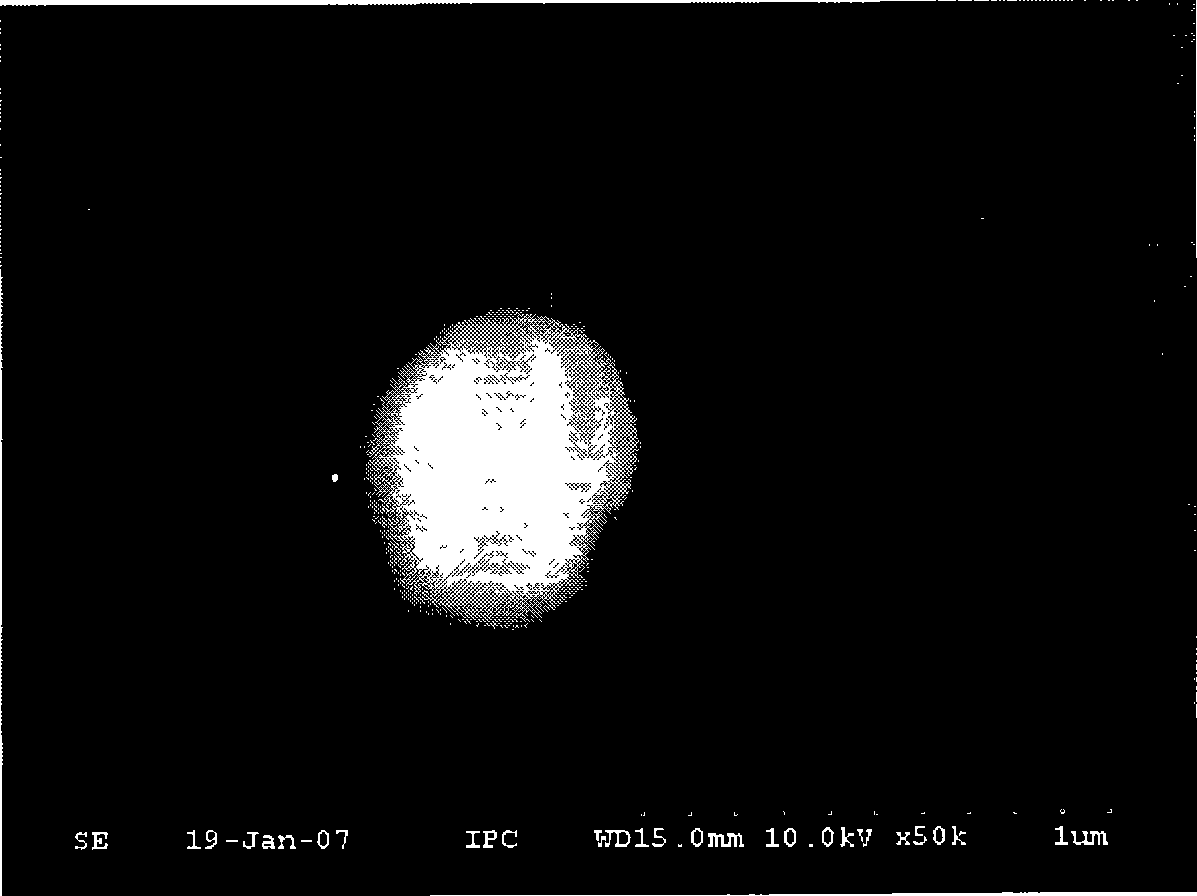Quasi uncharged solvent resistance complex function ball and method for making same
A composite function and solvent-resistant technology, applied in chemical instruments and methods, synthetic resin layered products, coatings, etc., can solve problems such as instability of electrophoretic particles
- Summary
- Abstract
- Description
- Claims
- Application Information
AI Technical Summary
Problems solved by technology
Method used
Image
Examples
Embodiment 1
[0031] (1) Preparation of polystyrene / titanium dioxide nanoparticles: prepared according to Chinese invention patent 200610011885.0;
[0032] (2) Disperse 2g of polystyrene / titanium dioxide nanoparticles obtained in step (1) into 1000mL of deionized water dissolved with 5g of PVP (MW=400000);
[0033] (3) 40g urea and 49mL formaldehyde are mixed to obtain a prepolymer;
[0034] Dilute 200ml of the polystyrene / titanium dioxide nano light sphere solution obtained in step (2) to a certain volume, add 20ml of prepolymer, adjust the pH value to 1 with HCl, polycondense at 15°C, and then solidify at 75°C. Centrifugal washing;
[0035] (4) Stability study: The obtained urea-formaldehyde resin-coated particles were dispersed in non-polar solvents (halogenated alkanes, aromatic compounds, fluorine-containing compounds, alkanes), and they could still be dispersed well after being left for a long time.
[0036] figure 1 A photo of polystyrene spheres / titanium dioxide nanoparticles / ure...
Embodiment 2
[0038] (1) Preparation of polystyrene / titanium dioxide nanoparticles: prepared according to Chinese invention patent 200610011885.0;
[0039] (2) 2g of polystyrene / titanium dioxide nanoparticles obtained in step (1) were dispersed into 1000mL of deionized water dissolved with 200g of PVP (MW=2000);
[0040] (3) 40g urea is mixed with 147mL formaldehyde to obtain prepolymer;
[0041] Dilute 280mL of the polystyrene / titanium dioxide nano-light sphere solution obtained in step (2) to a certain volume, add 40mL of prepolymer, adjust the pH value to 6 with sulfuric acid, polycondense at 55°C, and then solidify at 80°C. Centrifugal washing;
[0042] (4) Stability study: The obtained urea-formaldehyde resin-coated particles were dispersed in non-polar solvents (halogenated alkanes, aromatic compounds, fluorine-containing compounds, alkanes), and they could still be dispersed well after being left for a long time.
[0043] figure 2 For the Zeta change map.
Embodiment 3
[0045] (1) Preparation of polystyrene / titanium dioxide nanoparticles: prepared according to Chinese invention patent 200610011885.0;
[0046](2) 2g of polystyrene / titanium dioxide nanoparticles obtained in step (1) were dispersed into 1000mL of deionized water dissolved with 50g of PVP (MW=55000);
[0047] (3) 40g urea is mixed with 86mL formaldehyde to obtain prepolymer;
[0048] Dilute 200 mL of the polystyrene / titanium dioxide nano-light sphere solution obtained in step (2) to a certain volume, add 8 mL of prepolymer, adjust the pH value to 3 with HCl, polycondense at 30°C, solidify at 55°C, and centrifuge washing;
[0049] (4) Stability study: The obtained urea-formaldehyde resin-coated particles were dispersed in non-polar solvents (halogenated alkanes, aromatic compounds, fluorine-containing compounds, alkanes), and they could still be dispersed well after being left for a long time.
PUM
| Property | Measurement | Unit |
|---|---|---|
| size | aaaaa | aaaaa |
| thickness | aaaaa | aaaaa |
| thickness | aaaaa | aaaaa |
Abstract
Description
Claims
Application Information
 Login to View More
Login to View More - R&D
- Intellectual Property
- Life Sciences
- Materials
- Tech Scout
- Unparalleled Data Quality
- Higher Quality Content
- 60% Fewer Hallucinations
Browse by: Latest US Patents, China's latest patents, Technical Efficacy Thesaurus, Application Domain, Technology Topic, Popular Technical Reports.
© 2025 PatSnap. All rights reserved.Legal|Privacy policy|Modern Slavery Act Transparency Statement|Sitemap|About US| Contact US: help@patsnap.com



